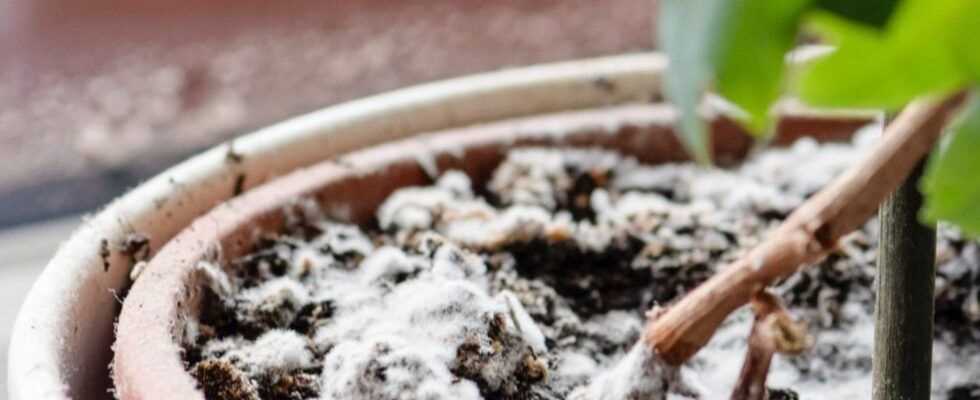Potting soil
Act right with white spots
If the white spots are fluffy, it is mold.
© matuska / Shutterstock.com
White spots on the potting soil are due to mold or limescale deposits. In both cases the plant can be saved.
It looks like mold – and in most cases it is. With indoor plants, but also with plants in the garden, it can happen that white, fluffy spots form on the potting soil. The cause is waterlogging. This occurs when the water in the earth cannot run off properly. This causes mold to form on the surface. Sometimes it stinks from the pots, because too little air gets in.
That helps against the white mold
Since a lot of moisture has accumulated in the pot, the roots of the plants have to dry out first. Therefore, as a first step, take the plant out of the bucket and let it dry. This can take a few days. Under no circumstances should you add more water during this time. It is also important to remove the white spots on the earth. In addition, you can treat the surface with a fungicidal agent that is available in the garden center.
The main reason why water accumulates in the pot is poor soil structure. It is therefore advisable to remove some of the old soil after it has dried and top up the pot with new soil. This should be loose and airy. In order to prevent the white spots in the future, the plants should be given enough water, but never too much. Another thing to prevent mold growth in indoor plants: regular ventilation. In addition, the plants should be placed in a bright place.
Calcareous water can also cause white spots
The upper part of the potting soil is white, but not fluffy? Then it is limescale stains. These arise when the plants are watered with calcareous water. This causes limestone to form on the earth. To avoid this, plant owners should run ordinary tap water through a lime filter before watering. Another option: add a dash of citric acid to the tap water.
